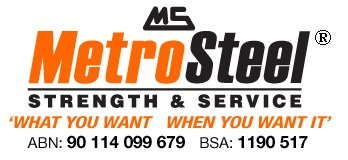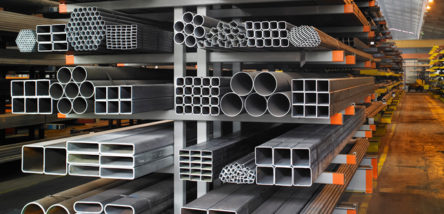Steel comes in a wide range of grades, finishes, specifications, and shapes each with their own unique qualities which means it can be used for many different applications. However, optimising the properties of steel for use in a particular application goes way beyond changing its chemical composition. Instead, the manufacturing process of steel needs to be considered for each particular product even when the specification and grade of the steel may be the same. One key element among pre-fabricated steel products is understanding the difference between hot and cold steel rolling and knowing which to use for your particular project.
The difference between hot and cold steel rolling
The main difference between these two processes lies in the name “hot” which refers to processing carried out with heat and “cold” which is a process carried out at room temperature. Although these techniques can affect the overall performance and application, it’s important not to confuse them with the actual specifications and grades of steel which refer to its chemical composition. Knowing which type of steel to use prevents over-spending on raw materials and saves time and money on any further processing.
Hot Rolled Steel
This is processed by rolling the steel at extremely high temperatures, in excess of 926°C. Steel shrinks when it’s cooled and since hot rolled steel is left to cool after processing it makes it harder to control its final shape which ultimately means that isn’t the best choice if precision is key to your application. Hot rolled steel has a scaly appearance and is typically used in construction, railroad tracks, and agricultural equipment where precision is less important.
The benefits of hot steel are that it is cheaper and because it’s left to cool naturally it’s free from internal stresses that can occur from hard-working processes. It’s ideal for use in projects where strength is more important than dimensional tolerances and where surface finish isn’t critical either.
Cold Rolled Steel
This is essentially hot rolled steel which has been further processed. When hot rolled steel has cooled it’s pressed with a roller and re-rolled at room temperature in order to create better surface qualities and more exact dimensions.
The term “cold rolled steel” is often used to describe a variety of finishing processes such as turning, polishing, and grinding all of which are used to modify existing hot rolled steel that is in stock and to create precise cold-rolled steel shapes.
The benefit of cold rolled steel is its superior surface aesthetic which means that it’s usually used for applications where aesthetics are important or where technical precision is key. However, the price is higher for cold rolled steel because of the further processes involved. In addition, cold rolled steel is harder and stronger than steel which has been hot rolled, although the downside of this means that internal stresses within the material can sometimes occur because of the additional processing. Typical uses for cold rolled steel include bars, roof and wall systems, metal furniture and home appliances.
So to sum up: You’ll most likely require hot rolled steel for large structural components whereas for smaller parts which require durability and precision, then cold rolled steel is the way to go.
If you’re in doubt as to which steel is best suited to your application then come and see the experts at Metro Steel or give us a call today on 07 3204 1000 to discuss your requirements.
 Talk to an Expert (07) 3204 1000
Talk to an Expert (07) 3204 1000 Working Hours - Mon – Fri 7:00 AM – 4:00 PM
Working Hours - Mon – Fri 7:00 AM – 4:00 PM
